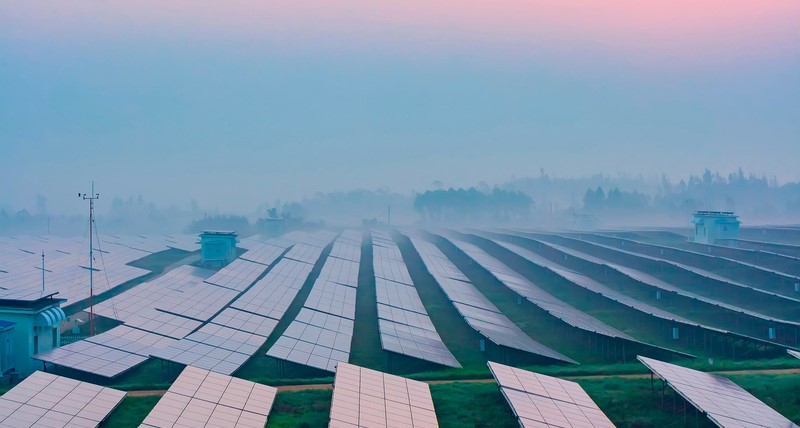Turbidity is one of the most talked about parameters in environmental water quality monitoring, yet the details around turbidity measurement are not always known or fully understood. Use our guide below for a better understand of all things turbidity!
Turbidity Overview
The amount of dispersed suspended solids in natural water bodies is an important indicator of water quality. These solids (such as silt, clay, algae, and organic matter) obstruct the transmittance of light through water and create a qualitative characteristic known as turbidity. Turbidity is often closely correlated to climatological or surface water conditions, and therefore indicates changes in environmental conditions of lakes, rivers and streams. For example, high levels of suspended sediment can interfere with photosynthesis by blocking light from reaching aquatic plants. This not only damages vegetation but also results in reduced levels of dissolved oxygen because of the reduction in photosynthesis. Moreover, waters with high levels of suspended solids absorb more light, which can cause an increase in water temperature, creating even lower dissolved oxygen. This stresses aerobic aquatic organisms and could ultimately lead to fish kills.
Turbidity as a Valuable Surrogate
The Clean Water Act requires States to establish total maximum daily loads (TMDLs) of various pollutants to meet water quality standards. The ability to continuously measure water parameters associated with impairments is often limited by technical and financial constraints. Turbidity, however, can be effective as a surrogate measurement because it can be measured in-stream on a continuous basis and it is strongly correlated with sediment, nutrients, and bacteria concentrations. Below is a list of turbidity as a surrogate measurement for many environmental influencers:
- Monitoring the impact of humans on natural water bodies.
- Monitoring pathogens in water, such as E.coli in storm water runoff from cattle pastures.
- Monitoring sediments to track erosion and landscape change.
- Monitoring natural streams below mining and dredging operations
- Measuring total phosphorous in water is very difficult, but an increase in phosphate or phosphorous typically correlates to an increase in turbidity levels.

Turbidity Measurement Technologies:
It’s important to remember that turbidity is not a measure of the quantity of suspended solids in a sample but, instead, an aggregate measure of the combined scattering effect of the water sample’s suspended particles on an incident light source. All turbidity measurements detect the amount of light either transmitted through or scattered by the particles in a sample of water.
Over the past several decades, instrument technology has advanced dramatically and many turbidity measurement techniques have resulted to address problems associated with earlier turbidity measurement techniques. Different technological approaches (often using different light sources and detector designs) have been used to compensate for or minimize measurement errors attributed to color, bubbles, stray light, absorption, and path length.
For a in-depth analysis of turbidity measurement methods, please view our Turbidity Measurement White Paper. For information on turbidity measurement, visit the Hydrolab turbidity sensor page for in-situ measurement methods or the Hach turbidity page for benchtop solutions.
Variability Based on Measurement Method
It is normal for different turbidity measurement technologies to deliver different results on the same sample. This is because natural suspended solids – whether algae, silt, organic material, etc. – have wildly different and practically unpredictable characteristics, such as the way they absorb and reflect light. From technology to technology, differences in the combination of incident light source, detection angle, and number of detectors, together with the natural variation in sample optical characteristics, lead to different measurement results. Because of this potential for variability, it is important to also provide information on the type of technology used to collect a given set of data.
Readings are generally reported in Nephelometric Turbidity Units, or NTUs. NTU has been the traditional reporting unit for turbidity and is still recognized by some as the “universal” unit of measure, regardless of the technology used. However, because of the potential to generate data with a high degree of variability when different technologies are used, the American Society for the Testing of Materials (ASTM) has revised its turbidity measurement methods to incorporate a unit reporting protocol that provides traceability to the type of technology used.
Best Practices When Measuring Turbidity
Best practices are essential for reliable data collection and use. When deciding on which technologies to use for a specific application, it is important to adhere to the following guidelines:
- Select the proper monitoring site: The site should produce a homogenous sample and be easily accessible.
- Know the environmental limits of the instrument for the specific sample location. This includes temperature and precipitation conditions.
- Select the proper instrument based on light source, detection angle, and sensitivity.
- Calibrate the instrument according to the manufacturer recommendations.
- Verify the calibration using same or similar technology.
- Maintain the instrument
For more information on turbidity measurement, please read our Turbidity White Paper, view our Turbidity Webinar below, or contact OTT Hydromet Technical Support at techsupport@otthydromet.com.


